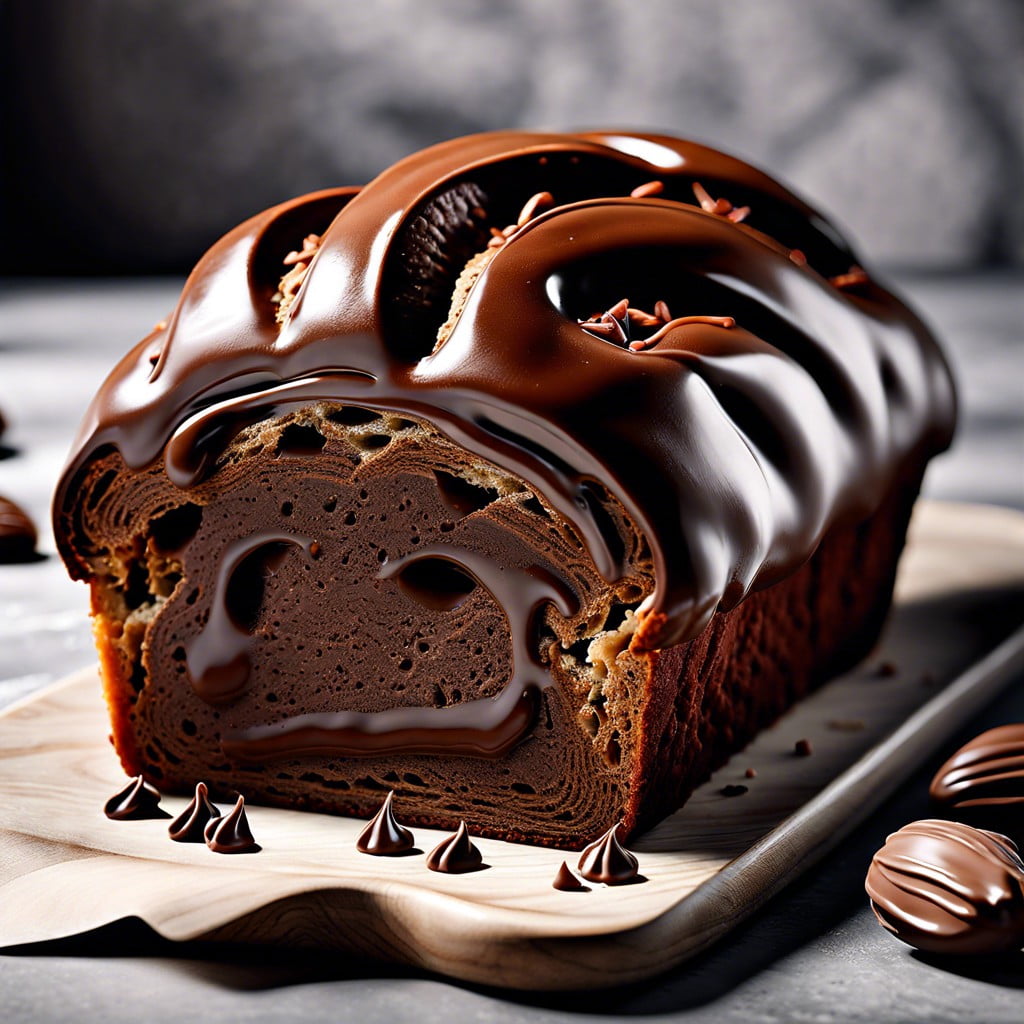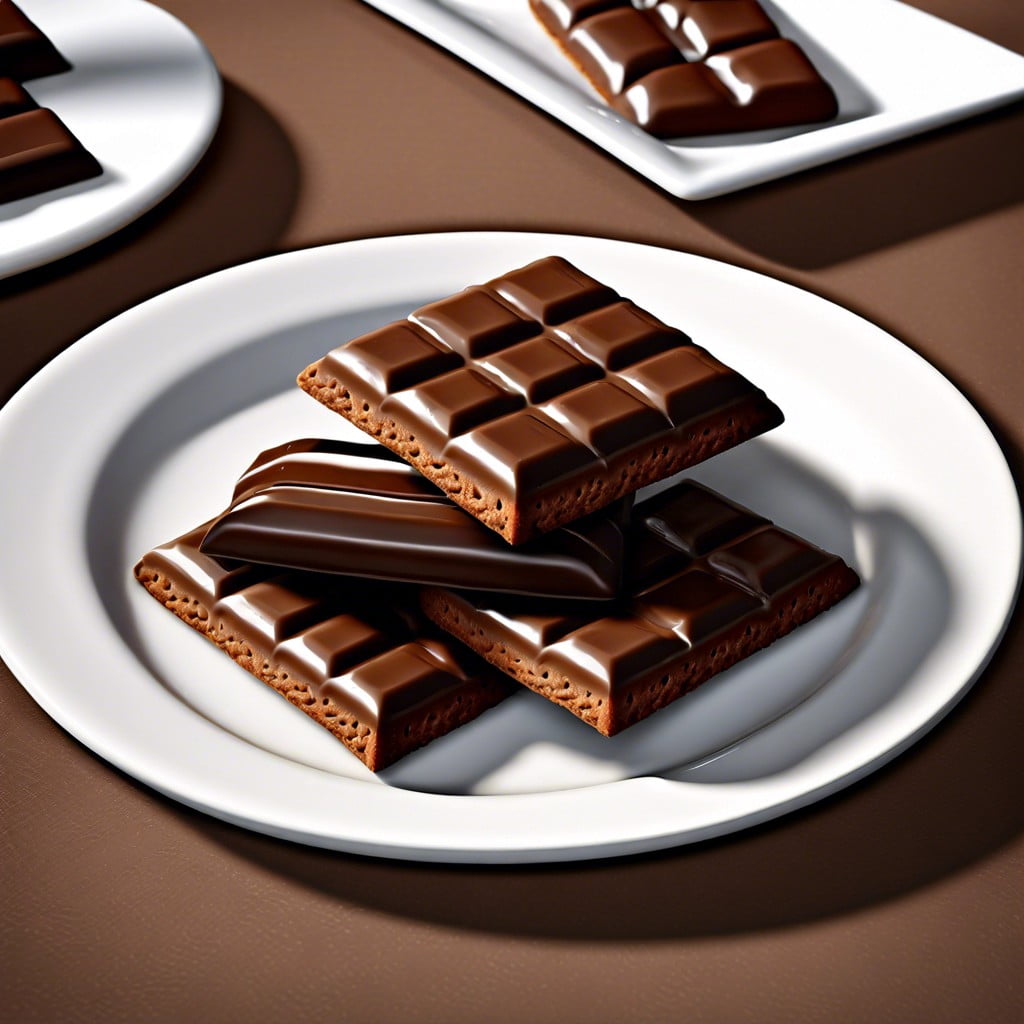Learn how to create a smooth and rich homemade chocolate frosting that will elevate any cake or cupcake to a delectable treat.
Key takeaways:
- Use high-quality ingredients for the best flavor.
- Sift powdered sugar and cocoa powder for a smooth consistency.
- Gradually add liquid and beat thoroughly to achieve desired consistency.
- Consider adding melted chocolate for a richer taste.
- Adjust sweetness with salt, coffee, powdered sugar, or cream cheese.
Inside
Chocolate Frosting Ingredients

To create a rich and luscious chocolate frosting, you’ll need the following key ingredients:
- Unsweetened Cocoa Powder: Provides a robust chocolate flavor. Opt for high-quality cocoa powder for a better taste.
- Butter: Acts as a base, giving the frosting structure and a creamy texture. Use unsalted butter to control the overall saltiness.
- Powdered Sugar: Also known as confectioners’ sugar, it sweetens the frosting and contributes to a smooth consistency.
- Milk or Cream: Thins out the mixture to the desired consistency. Milk will result in a lighter frosting, while cream will make it richer.
- Vanilla Extract: Enhances flavor. Pure vanilla extract is preferable for its superior taste.
- Salt: A pinch helps to balance the sweetness and intensify the chocolate flavor.
Remember, the quality of ingredients greatly affects the outcome, so select the best available options within your budget.
How to Make Chocolate Frosting
Begin by sifting powdered sugar and unsweetened cocoa powder to eliminate lumps. This ensures a smooth consistency in your frosting. Melt butter completely and blend it with the dry ingredients to create a cohesive mixture. To enhance the flavor and texture, add a pinch of salt and a splash of vanilla extract.
Proceed to mix in heavy cream, gradually, to reach the desired consistency. It’s important to add the liquid slowly and to beat the mixture thoroughly between additions. Overbeating can incorporate too much air, making the frosting too light, whereas underbeating can leave it grainy.
For a richer chocolate taste, consider melting high-quality chocolate and folding it into the mixture once it has slightly cooled. This can deepen the frosting’s chocolate profile and add a glossy finish. Stir until the chocolate is fully incorporated, ensuring an even distribution throughout the frosting.
Frosting should be used at room temperature. If it becomes too stiff, soften it by beating in additional cream a teaspoon at a time. Conversely, if it is too runny, more powdered sugar can be added incrementally until the proper thickness is achieved. Remember that the frosting will firm up once chilled, so adjust accordingly if you plan to refrigerate your frosted dessert before serving.
Serving Suggestions for Chocolate Frosting
Layer cakes and cupcakes gain a rich complement from chocolate frosting, which enhances their sweetness and provides a satisfying texture contrast.
For a decadent treat, try piping or spreading the frosting on brownies or blondies.
Drizzle it over cookies or use it to sandwich two together for a special dessert.
Chocolate frosting can also serve as a dip for fruits, such as strawberries or banana slices, offering a delightful combination of fresh flavors and creamy chocolate.
For a twist, mix in some orange zest or peppermint extract before applying to your dessert to create a unique flavor profile.
Adjusting Sweetness in Chocolate Frosting
Balancing the sweetness of your chocolate frosting to your liking involves some simple adjustments:
- For a less sweet frosting, consider adding a pinch of salt or a small amount of brewed coffee. Both ingredients can enhance the flavor complexity, reducing the perceived sweetness without compromising the chocolate taste.
- If the frosting is too bitter, gradually add powdered sugar, a teaspoon at a time, until you reach the desired sweetness level.
- Incorporate a dollop of cream cheese to introduce a tangy flavor that naturally balances out the sweetness.
- Unsweetened cocoa powder can also be added to dull excessive sweetness. Sift and fold in additional cocoa powder in small increments.
- To refine the overall flavor and cut through the sweetness without altering the chocolate profile, a teaspoon of pure vanilla extract can be an excellent complement.
Remember, adjustments should be made in small increments, thoroughly incorporating each addition before tasting and deciding on further adjustments.
Troubleshooting Common Chocolate Frosting Issues
If your frosting is too thick, gradually add milk or cream, a teaspoon at a time, until reaching the desired consistency. Conversely, if it’s too runny, sift in a small amount of powdered sugar or cocoa powder to thicken it.
Be cautious to avoid over-mixing which can result in a grainy texture. For greasy frosting, it’s often due to butter that’s too soft; chilling the mixture briefly can remedy this.
When your frosting has air bubbles, let it sit for a few minutes to settle, then stir gently. If separation occurs, usually from temperature differences, gently warm the frosting over a double boiler and whisk until smooth.
To revive overly sweet frosting, add a pinch of salt or a small amount of instant espresso powder to balance the flavor without altering the chocolate richness.




